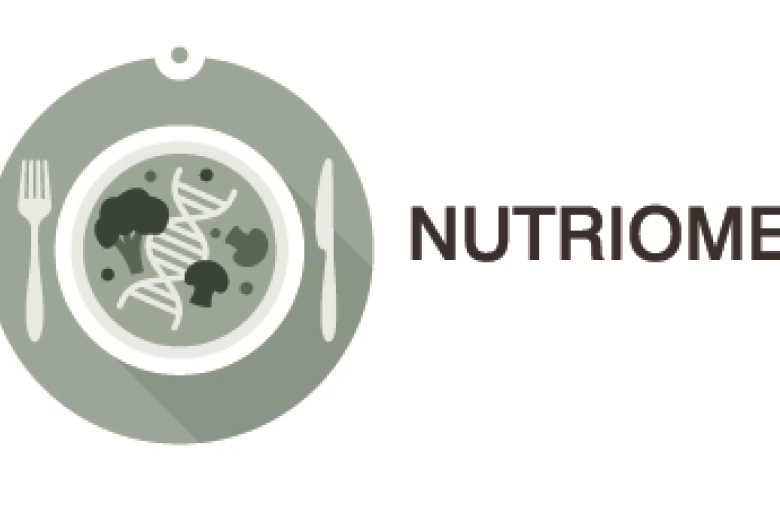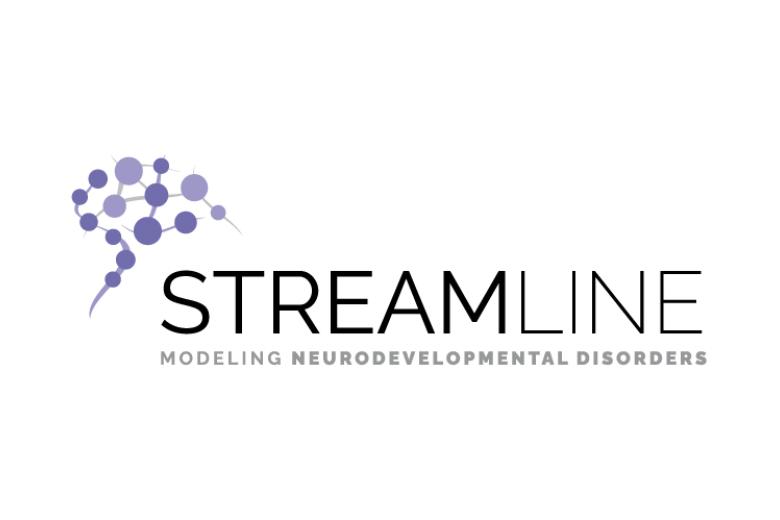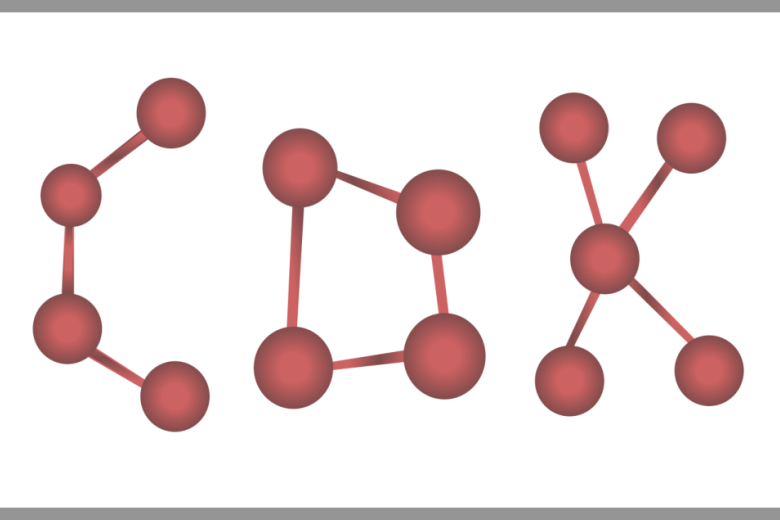Research projects
The Department of Translational Genomics is involved in several projects.
Ongoing projects
Clinical Genetics Collaboration on Inherited Metabolic Disorders (IMDs)
A recent collaboration between the biochemical genetic lab of MUMC and the bioinformatics department (TGX, NUTRIM) has led to three successful projects.
With this successful collaboration we have created an even stronger bridge between these two expertise fields, and inspire and support other researchers in converting (existing) drawings of pathway into computer readable models to form new path(way)s, enabling (automated) data analysis.
The first project is a systems biology integration of existing clinical data for pyrimidine and urea cycle metabolic disorders (IMDs), which were linked to pathway models and biomarker data (preprint link available here).
Furthermore, a recently published version of the well-known reference book "Physician's Guide to the Diagnosis, Treatment, and Follow-Up of Inherited Metabolic Diseases" (edited by prof. Nenad Blau, ISBN: 978-3-030-67726-8, already available as an eBook in the University Library), including an Open Access chapter on integrating pathway knowledge with clinical data from the perspective of the clinical experts. We have created a portal as an integrative overview of existing IMD pathways, which are also used by the database IEMBase (a digital version of the aforementioned book) and the European Joint Programme on Rare Diseases (EJP-RD including 100 pathway models available here).
- Duration: This project started in 2017.
- TGX project members:
- dr. Denise Slenter (Postdoc, PI)
dr. Egon Willighagen (Assistant Professor)
- Project Website: https://bigcat-um.github.io/IMD-PUPY
CIN: Brain miRNA’s as markers of drug induced changes in neural integrity
Testing mechanistic and placebo-controlled studies in which we will administer a psychedelic drug (i.e. psilocybin) that is known to affect neural integrity
Introduction
MicroRNAs (miRNAs) are small RNA molecules of about 22 nucleotides in length. Since the first miRNA was discovered in 1993 in Caenorhabditis elegans, 2588 human miRNAs have been identified. The primary function of miRNAs is RNA silencing and post-transcriptional regulation of gene expression. Consequently, miRNAs have been found to exhibit unique expression patterns as an early response to internal and external conditions. Recently, miRNAs have also been detected in the extracellular fraction of the blood. These circulating miRNAs (cmiRNAs) were found to be stable even under conditions as harsh as boiling, extreme pH, long-time storage at room temperature, and multiple freeze-thaw cycles.
The stability of cmiRNAs in the circulation, the accessibility through minimally invasive “liquid biopsies” and the advantage that cmiRNAs can be detected in a quantitative manner by relatively simple methods such as a real-time PCR, makes them a very promising new class of biomarkers for interrogating organ and brain pathologies. In fact, circulating miRNAs are currently explored in search for reliable and highly specific biomarkers of drug-induced efficacy and/or injury. We recently have shown that a pattern of extracellular miRNAs, including several liver enriched cmiRNAs, was able to discriminate acetaminophen-induced liver injury from liver cirrhosis, acute hepatitis B and type 2 diabetes mellitus. Moreover, the pattern of extracellular miRNAs that was specific for acetaminophen induced liver-injury comprised of, next to liver-enriched, also brain-enriched miRNAs, which were known to play essential roles in brain function. This finding was in correspondence to known CNS toxicity induced by acetaminophen in rodents (8), and consequently prompted us to hypothesize that acetaminophen might also induce neurotoxicity.
Hypothesis
This finding of organ-enriched miRNAs in the circulation upon drug-induced organ damage led to the hypothesis that also profiles of brain-borne miRNAs assessed by RNA sequencing are detectable in the circulation and would allow interrogating the brain condition by minimally-invasive liquid biopsies, including estimation of the biological mechanism and potential therapeutic effect of specific psychoactive drugs. The brain expresses more distinct and larger numbers of miRNAs than any other tissue in vertebrates. Neural miRNAs are involved at various stages of synaptic development, including dendritogenesis, synapse formation and synapse maturation. miRNAs have emerged as master regulators of gene expression in the nervous system where they contribute to (maladaptive) neuronal network plasticity. We therefore hypothesize that drug induced changes in neural integrity (i.e. either neurotoxicity or neuroplasticity) can be predicted from drug induced changes in miRNA.
Research
We will test the hypothesis in mechanistic, placebo-controlled studies in which we will administer a psychedelic drug (i.e. psilocybin) that is known to affect neural integrity. Recent clinical trials have demonstrated that single dose administrations of psilocybin produce an instant reduction of depressive symptoms in depressed patients who are resistant to traditional antidepressant treatment. Moreover, the instant relief of depressive symptoms pertains for days or weeks suggesting that these drugs induce an enduring reset of the brain (10). Molecular and cellular studies in rodent models demonstrate that psychedelic drugs such as psilocybin rapidly increase synaptogenesis, including increased density and function of spine synapses, in the prefrontal cortex (PFC) and hippocampus and thereby cause a functional reconnection of neurons that underlies the rapid behavioral responses. However, exposure to high doses of psilocybin or related psychedelics have also been shown to produce neurotoxicity in drug abusers. Single administrations of low and high doses of psilocybin are thus expected to cause neurogenesis and neurotoxicity respectively and are perfectly suited to test our hypothesis that drug induced changes in neural integrity can be demonstrated through miRNA profiling.
In addition, if changes in neural integrity caused by psychedelics cause corresponding changes in miRNA, then it also follows that the latter can be prevented or reversed when blocking the mechanism of action of psychedelics. Psilocybin exerts is major action through agonism of 5HT2A and 5HT1A receptors. The 5HT2A receptor is primarily a cortical receptor. In humans, expression of the 5-HT2A receptor is considerably higher in the cortex than in subcortical structures such as the thalamus, basal ganglia, and hippocampus with minimal/negligible expression in the cerebellum and brainstem. The 5-HT1A receptor is highly expressed on serotonergic neurons in the raphe nuclei where it functions as a presynaptic autoreceptor – exerting a strong homeostatic control over 5-HT neuron firing rates and thus, 5-HT efflux in the forebrain. The majority of 5-HT1A receptors are expressed postsynaptically in many brain regions, particularly the limbic system and cortex. Given that 5HT1A and 5HT2A receptors are exclusively located in the brain, we expect that blockade of these receptors will automatically enable us to identify brain miRNAs that are involved in the psychedelic response. The profile of brain-related cmiRNAs that respond to psilocybin challenges will alter during combined administration of psilocybin and a 5HT2A antagonist or 5HT1 agonist. Profiles of brain-derived cmiRNA in serum will offer the opportunity to evaluate early responses of the brain to administration of psychoactive drugs, which can be used as easy and sensitive biomarkers of neurotoxicity or neuroplasticity.
NWO Complexity "Complex Systems Framework for Non-alcoholic fatty liver disease
One of the most prevalent diseases linked to obesity is Non-Alcoholic Fatty Liver Disease (NAFLD), which is characterized by accumulation of fat droplets in the liver and gradual progressing into disease stages with advancing levels of inflammation and fibrosis, eventually resulting in a potential fatal outcome. The mechanisms behind the initiation and progression of the disease are still poorly understood, which hampers the development of effective treatments and prevention strategies. Therefore, this project is focusing on the development of a novel research strategy that allows describing cellular and molecular changes that occur during the development of the disease in a computational model. This ‘Complex Systems Framework’ will be applied to a new set of data that will be generated using an innovative cell culturing system using human primary hepatocytes that are chemically induced to develop an increasingly severe disease phenotype over time. Additionally, ‘cell-painting’ technologies will be used to visualize phenotypic endpoints at the subcellular level, which will guide the identification of crucial transitions in the development of NAFLD. At these transitions, gene expression analysis using RNA-sequencing will be performed to obtain insight in the molecular processes accompanying these disease state transitions. Based on the detailed description of the processes involved in transitions during disease progression, a mathematical model will be constructed that integrates both cellular and molecular features. This model will be applied for the identification of molecular targets for disease treatment and prevention and allows for the design of more effective and individually tailored food-based intervention strategies.
NUTRIOME: Data-driven precision nutrition (MSCA)
NUTRIOME is a Marie Skłodowska-Curie actions (MSCA) Doctoral Network of the Horizon Europe. The network supports the career development and training of 10 Research Doctoral Candidates (RDCs) in an international and cross-disciplinary environment.
The focus of NUTRIOME is to train 10 RDCs in data-driven precision nutrition using two complementary training strategies to learn how to handle and combine multi-omics data, to evaluate the response to foods and diets.
We will provide multi-disciplinary training, so that the RDCs:
- are able to utilize, share and disseminate public available multi-omics data,
- know the regulations and routine for collaborative data sharing in a FAIR manner, and
- are experts in analyzing, integrating and interpreting increasingly complex data.
This will provide a new competence profile to resolve a bottleneck for development of personalised preventive solutions for improved health in Europe.
- Funding: NUTRIOME is a Marie Skłodowska-Curie actions (MSCA) Doctoral Network of the Horizon Europe (GA no. 101119497).
- Duration: 1 Oct 2023 - 30 Sept 2027
- TGX project members:
- dr. Susan Coort (WP6 leader and PhD supervisor)
- Guangya Shen (PhD candidate)
- NUTRIOME website: link

Ontology-driven and artificial intelligence-based repeated dose toxicity testing of chemicals for next generation risk assessment (ONTOX)
The vision of the ONTOX consortium is to provide a functional and sustainable solution for advancing human risk assessment of chemicals without the use of animals in line with the principles of 21st century toxicity testing and next generation risk assessment. Specifically, ONTOX will deliver a generic strategy to create innovative new approach methodologies (NAMs) in order to predict systemic repeated dose toxicity effects that, upon combination with tailored exposure assessment, will enable human risk assessment. This strategy can be applied to any type of chemical and systemic repeated dose toxicity effect. However, for proof-of-concept purposes, focus will be put on 6 specific NAMs addressing adversities in the liver (steatosis and cholestasis), kidneys (tubular necrosis and crystallopathy) and developing brain (neural tube closure and cognitive function defects) induced by a variety of chemicals, including from the pharmaceutical, cosmetics, food and biocide sectors. The 6 NAMs will each consist of a computational system based on cutting-edge artificial intelligence (AI) and will be primarily fed by available biological/mechanistic, toxicological/ epidemiological, physico-chemical and kinetic data. Data will be consecutively integrated in physiological maps, quantitative adverse outcome pathway networks and ontology frameworks. Data gaps, as identified by AI, will be filled by targeted stateofthe-art in vitro and in silico testing. The 6 NAMs will be evaluated and applied in collaboration with industrial and regulatory stakeholders in order to maximise end-user acceptance and regulatory confidence. This is anticipated to expedite implementation in risk assessment practice and to facilitate commercialisation. ONTOX will have a deep and long-lasting impact at many levels, in particular by consolidating Europe’s world-leading position regarding the development, exploitation, regulation and application of animal-free methods for human risk assessment of chemicals.
- Funding: ONTOX – has received funding from the European Union’s Horizon 2020 Research and Innovation programme under Grant Agreement No. 963845..
- Duration: 1 May 2021 - 30 April 2026
- TGX project members:
- prof. dr. Theo de Kok (PI)
- dr. Danyel Jennen (PI)
- dr. Florian Caiment (PI)
- dr. Marcha Verheijen (Postdoc)
- Brian Bwanya (PhD candidate)
- Website: https://ontox-project.eu/
SafetyNet
Drug safety indices for heart and liver derived from network modelling
SafetyNet proposes an in silico approach to replace animal testing in drug development. The approach is focused on computing safety indices (SIs) for drugs that induce liver and heart toxicity in humans. SI prediction is based on network modelling using different kinds of omics data that are available for the drug under study (methylome, proteome, transcriptome) . Applicants have previously developed drug response network (DRN) models for heart and liver using iPSC-derived 3D human cardiac and liver microtissues that were exposed to a panel of different drugs known to induce heart or liver toxicity. The goal of the SafetyNet project is to further refine, extend and test the DRNs by using a large body of publicly available drug response data (~ 500 drugs). For each of the drugs we will map the available timeand dose-sensitive data onto the DRN and perform network propagation modelling to derive a final prioritization of the proteins. Functional testing of the most relevant proteins will be done to associate these proteins with heart and liver toxicities and to phenotypically anchor the DRNs. Additionally, literature mining and disease associations will be used to propose novel protein candidates to extend the DRNs. In an iterative process of computational network modelling, functional testing and text mining the two DRN models will be refined and ultimately used to compute a safety index (SI) for each drug. Use cases will be carried out to compare and validate SI predictions. A prototype will be implemented that contains the different elements of the SafetyNet approach for further exploitation in regulatory and pre-clinical testing.
SafetyNet will be compatible with rodent data in order to be able to compare adverse outcome predictions using human in vitro data and rodent in vivo data. The final SafetyNet predictions for liver and heart toxicity should reduce uncertainty in adverse outcome prediction and should contribute to gradual replacement of animal testing.
STREAMLINE
Neurodevelopmental disorders (NDDs) caused by alterations in early brain development are a group of complex and heterogeneous disorders that give rise to the psychiatric conditions such as autism spectrum disorders, intellectual disability, schizophrenia and bipolar disorder. NDDs have a high socio-economic impact and patients with NDDs and mental health problems are geographically dispersed. Thus, establishment of high capacity regional centres with equivalent research capacity and codes of practice is needed in order to build global research activity. The goals of STREAMLINE are to enhanced strategic networking and reinforce research and innovation potential of the Institute of Molecular Genetics and Genetic Engineering (IMGGE) in order to develop IMGGE as a high capacity hub for research of NDDs in the Western Balkans which is able to integrate with similar centres in Europe. This will be achieved by twinning IMGGE with three top-class research institutions in Europe: Cardiff University, University of Maastricht and Centre for Research and Technology. The project objectives are:
a) to enhance the current and scale up the overall strategic networking activities between the IMGGE and internationally-leading European partners and regional partners;
b) to raise the research profile of research stuff and scientific attractiveness of IMGGE in the field of NDDs;
c) to strengthens research management capacities and administrative skills of the IMGGE staff and
d) to become a regional leader in innovations tackling NDDs.
Objectives will be achieved through networking, staff exchanges, training, summer schools, symposia, workshops, participation at conferences and dissemination in scientific community, industries and public. Twinning with partners will provide access to new research avenues, creativity, development of new approaches and increased mobility (inwards and outwards) of qualified scientists. Coordinator: Institute of Molecular Genetics and Genetic Engineering, University of Belgrade (IMGGE), Serbia Partners: -Cardiff University (CU), United Kingdom -Maastricht University (UM), Netherlands – Centre for Research & Technology Hellas (CERTH), Greece
- Funding: This Project has received funding from European Union, under the Horizon Europe programme Widening Participation and Spreading Excellence, Grant Agreement number: 101060201.
- Duration: 1 Jul 2022 - 30 Jun 2025
- TGX project members:
- Website: https://streamlineproject.rs/

TiO2 project
Effect of food additive E171 (titanium dioxide) on the development of colorectal cancer
The food additive E171 (titanium dioxide) is present in many different food products, including sweets, cookies, icing and chewing gum. Consumers are exposed between 1 and 2 mg/kg bw/day depending on the age, it is important to evaluate the potential risk of this compound on human health. E171 comprised titanium dioxide (TiO2) particles of various sizes, among others in the nanoparticle size range. In view of its chemical nature, TiO2 was considered to be inert in humans after ingestion and allowed as food additive on the European market. In 2016, the European Food Safety Authority (EFSA) published an opinion in which it was concluded that after ingestion, no health effects for humans were to be expected. However, in 2017, the European Chemicals Agency (ECHA) published an opinion which proposes that TiO2 be classified as a category 2 carcinogen after inhalation, and the International Agency for Research on Cancer (IARC) has designated titanium dioxide as possibly carcinogenic to humans after inhalation.
After publication of the EFSA opinion in 2016, a number of new studies were published in scientific literature, reporting harmful effects of exposure to E171 in laboratory animals. In addition, a coherent sequence of studies has demonstrated that the basis of insolubility and inertia, it is no longer valid to assume that E171 has no toxic effects. These studies demonstrated in vitro damage to human colonic cells, and identified relevant molecular processes in different types of animal studies that raise concern about human safety (Proquin 2018). A recent ANSES report (ANSES, 2019) is in line with this notion. In order to establish if the molecular mechanisms induced in animal studies, and which are linked to cancer promotion, are also induced in humans, a dietary intervention study is needed.
Therefore, the main core of the present PhD project will consist of a human dietary intervention study for which the protocol is already approved by the METC of the Maastricht UMC+. In addition, the PhD candidate will set up an in vitro study with human colon organoids, to evaluate gene expression responses in a relevant human model. Furthermore, the kinetics of TiO2 micro and nanoparticles will be studied, focusing on the relevance of different colonic cell types
TXG-MAP
- Project Title: Translational quantitative Toxicogenomics mechanism-based AOP mapping for human NAM-based risk assessment (TXG-MAP)
- Summary: The TXG-MAP project aims to improve chemical safety assessments by integrating New Approach Methodologies (NAMs) with toxicogenomics to provide a detailed understanding of chemical mechanisms. Despite advances, the regulatory implementation of toxicogenomics remains limited. To address this, TXG-MAP has three main objectives: first, to assess how well in vitro NAM test systems reflect human physiology; second, to develop a framework for interpreting toxicogenomics data, ensuring relevance across different test systems and human biology; and third, to create quantitative bioinformatics tools for hazard characterization within an Adverse Outcome Pathway (AOP) framework. The TXG-MAP project is coordinated by Leiden University.
- The project outputs include an integrated toolbox for toxicogenomics data analysis, case studies demonstrating applicability for EFSA, and a web-based TXG-MAP toolbox for interpreting toxicogenomics studies. Furthermore, TXG-MAP will establish a framework to quantify gene network activities, mapped to Key Events in AOPs. This will enhance regulatory confidence in NAM-based safety assessments.
- TXT-MAP is funded under EFSA call GP/EFSA/ED/2022/01: NAM projects in the areas of AOP development and transcriptomics for risk assessment
- Duration: 8 November 2023 - 8 November 2027
- TGX project members:
Virtual Human Platform for safety assessment (VHP4Safety)
The mission of the Virtual Human Platform is to improve the prediction of the potentially harmful effects of chemicals and pharmaceuticals based on a holistic, interdisciplinary definition of human health by developing the Virtual Human Platform and accelerating the transition from animal-based testing to innovative safety assessment. The Virtual Human Platform integrates data on human physiology, chemical characteristics, and perturbations of biological pathways.
The Virtual Human Platform addresses the emerging societal challenge of the transition to animal-free safety assessment, by integrating various scientific disciplines in the consortium and working with all stakeholders towards implementation and societal acceptance of an approach to chemical safety assessment that is based on human data rather than animal data.
- Funding: VHP4Safety – the Virtual Human Platform for safety assessment project NWA 1292.19.272 is part of the NWA research program ‘Research along Routes by Consortia (ORC)’, which is funded by the Netherlands Organization for Scientific Research (NWO).
- Duration: 1 June 2021 - 31 May 2026
- TGX project members:
- prof. dr. Chris Evelo (PI)
- dr. Egon Willighagen (PI)
- prof. dr. Theo de Kok (PI)
- dr. Danyel Jennen (PI)
- dr. Marvin Martens (Postdoc)
- dr. Ozan Cinar (Postdoc)
- Jente Houweling (PhD candidate)
- Saad Lodhi (PhD candidate)
- Website: https://vhp4safety.nl/

European Rare Diseases Research Alliance (ERDERA)
The European Rare Disease Research Alliance (ERDERA) is a groundbreaking initiative aimed at transforming rare disease research and patient care in Europe. Launched in September 2024 with an estimated budget of €380 million, ERDERA builds upon the European Joint Programme for Rare Diseases (EJPRD) to enhance prevention, diagnosis, and treatment efforts for rare diseases. With support from the European Union through Horizon Europe and contributions from member states and private partners, ERDERA integrates over 170 organizations from 37 countries.
Rare diseases affect over 300 million people globally, with many patients experiencing prolonged diagnostic journeys and limited treatment options. ERDERA seeks to address these challenges by advancing innovative clinical research, fostering public-private collaborations, and developing a robust data and expertise infrastructure. The initiative is structured around four key pillars: funding for international research projects, a clinical research network, comprehensive support services—including data, expertise, and innovation hubs—and alignment of national and international research strategies.
With a mission to make Europe a world leader in rare disease research, ERDERA will leverage artificial intelligence, digital technologies, and advanced therapies to accelerate scientific breakthroughs. Additionally, it will enhance clinical trial accessibility, ensuring that every consenting patient can participate in relevant studies. The partnership also aims to strengthen Europe’s global competitiveness and job creation in the field of biomedical research. By uniting expertise and resources, ERDERA is set to revolutionize rare disease research, ultimately improving the lives of millions of patients worldwide.
- Funding: ERDERA has received funding from the European Union’s Horizon Europe research and innovation programme under grant agreement N°101156595.
- Duration: 1 September 2024 - 31 August 2031
- TGX project members:
- dr. Friederike Ehrhart (PI)
- Alexandra Valeanu (PhD candidate)
- Website: https://erdera.org/

Project Index
-
CDK2024 (NWO)
-
Clinical Genetics Collaboration on Inherited Metabolic Disorders (IMDs)
-
CIN: Brain miRNA’s as markers of drug induced changes in neural integrity
-
NWO Complexity "Complex Systems Framework for Non-alcoholic fatty liver disease
-
NUTRIOME: Data-driven precision nutrition (MSCA)
-
Ontology-driven and artificial intelligence-based repeated dose toxicity testing of chemicals for next generation risk assessment (ONTOX)
-
SafetyNet
-
STREAMLINE
-
TiO2 project
-
TXG-MAP
-
Virtual Human Platform for safety assessment (VHP4Safety)
-
European Rare Diseases Research Alliance (ERDERA)
